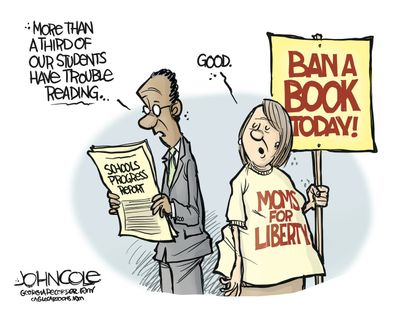A program meant to renovate Wichita’s single-family public housing stalled in 2019. And there’s been no clear path forward since then.
By Ceila Hack, The Wichita Beacon
Aujanae Bennett wants to see her Northeast Millair neighborhood flourish — children playing in the streets, clean lawns and driveways, pride in the community.
But the 41 city-owned homes dominating the northwest corner of her neighborhood are an obstacle to that, Bennett said. Over the past four years, she’s noticed the homes have been vacated and boarded up, one by one. “No trespassing” signs are hung from their doors. Only 13 appear to be populated.
“It has meant no activity, no real progress of any kind,” said Bennett, who is the neighborhood association president of Northeast Millair. “No real life.”
Bennett worries the vacant homes attract crime. She pointed out a small memorial, decorated with flower bouquets and veladoras, in one of the driveways.
“Something happened there. This is like a breeding ground for ‘something to happen,’” said Bennett, who has lived in the neighborhood since 1968. “And it’s not good things.”
The city owns 352 single-family public housing units, which are meant for income-eligible tenants. They’re in desperate demand, too — in 2021, the city of Wichita needed 44,000 more affordable housing units than it had.
And at least 178 of them are empty — some for longer than Sally Stang, director of Wichita’s Housing and Community Services Department, would like.
“Some of them have been vacant for quite a while, unfortunately,” Stang said.
The vacancies are a casualty of a five-year effort to rethink the future of Wichita’s single-family public housing and a lack of funding to keep them habitable.
In October 2020, Stang announced the city could apply to the U.S. Department of Housing and Urban Development by January 2021 to demolish or sell any of the properties. That move would give the city dollars to reinvest in new affordable housing, while offering existing tenants rental assistance to move elsewhere or an opportunity to buy the house. But as of January 2022, the city has not submitted an application. Meanwhile, the homes remain stuck in limbo with vacancies growing.
“I really don’t know why the city of Wichita hasn’t created a concrete plan to sell the 352 single-family houses they own,” wrote John Todd, a retired real estate broker and developer in Wichita, in an email to The Wichita Beacon.
“A bulk of these homes, that I am familiar with, are currently vacant with windows boarded up and fit the definition of an underutilized housing asset,” he added.
The homes’ histories
Crunch. Crunch. Crunch.
Pieces of drywall snapped beneath Leon Salazar’s feet as he bounded across insulation and ceiling remnants in a city-owned home in south Wichita. The house, built in the 1970s, had drywall installed in the ceiling with nails instead of screws — a decision that caused the ceiling to collapse, said Salazar, a rehabilitation specialist for the Wichita Housing Authority.
The home needs thousands of dollars in repairs to make it habitable, Stang said.
The house is one of 578 public housing units the city owns. About 60% are single-family homes, and 40% are multifamily apartments for seniors. The single-family homes need nearly $18.9 million in construction and rehabilitation work, according to a 2019 evaluation of the units. That’s part of a national public housing capital repairs backlog of $70 billion.
“We don’t have HUD money to do the repairs to even make them habitable, let alone rehab them,” Stang said.
In 2017, the city decided to take action on the poor condition of the city’s public housing. It pursued a federal program that allows local housing authorities to use private financing to rehabilitate public housing by converting them into Section 8 properties.
“This represents massive redevelopment over the next two years,” John E. Hall, then director of the Housing and Community Services Department and Wichita Housing Authority, said in a 2017 press release.
“Our neighborhoods will receive an extreme makeover, participants will have the opportunity to live in newly renovated homes and the local economy will experience a boost,” he added.
But scattered single-family homes, as it turns out, aren’t the ideal target for private investors, Stang said. The city secured financing to renovate its senior apartment-style housing complexes — a project that closed in September — but decided to pursue a different path to address the single-family homes.
“We could not find an investor or a lender, including HUD, that was willing to invest in the single-family portfolio,” Stang said. “Even HUD said single-family homes are too expensive and too difficult to maintain and manage.”
‘We never thought it would drag out this long’
In December 2019, Stang pitched the City Council on a new strategy to handle the 352 single-family properties.
Instead of using private financing to renovate all the units, Stang proposed splitting the homes into smaller parcels. Some could continue to try to get private financing for renovations. Others would go through a different HUD program, which permits housing authorities to demolish or sell their housing properties. Tenants could purchase their home from the city or receive a voucher to help pay rent elsewhere. The city would use sale proceeds to build one-for-one replacement multifamily affordable housing units.
“I think we have a path forward. It’s a matter of deciding among options,” City Manager Robert Layton said in the December 2019 meeting. “But the good news is, when it’s all said and done, we’re hoping to have more affordable units than we had originally.”
In October 2020, Stang told the City Council that the Wichita Housing Authority could apply to HUD after January 2021 to demolish or sell the properties.
But one year later, in October 2021, no action had been taken. A 2022 annual plan by the Wichita Housing Authority indicated that it would apply to HUD to sell or demolish the single-family homes in 2022 — two years after Stang asked the City Council to rethink its approach to the single-family public houses.
“It’s been disappointing to see how slow it’s been,” said Jeff Blubaugh, a City Council member since attempts to renovate the homes began in 2017.
Stang said that the coronavirus pandemic, which hit right after the city decided to reposition its single-family properties, significantly slowed the city’s ability to address the properties in 2020. In 2021, her office largely focused on the multifamily apartment project.
“We never thought it would drag out this long but who could have predicted COVID and other challenges,” Stang wrote in an email to The Beacon.
Vacancies grow in Wichita’s public housing units
As the city discussed demolishing and selling the properties — but did not go through with it — vacancies in the single-family public housing stock kept growing.
Since 2017, the city has largely not refilled units when they are vacated. This helps the city avoid having to relocate tenants if the unit is renovated or sold, Stang said.
“The disruption to families would be detrimental,” Stang wrote in an email.
Meanwhile, the city closed applications to live in public housing in December 2017.
In December 2019, about 35% of the single-family units were unoccupied. That number increased to about 50% by December 2021.
The Wichita Housing Authority is not mandated by HUD to keep the properties vacant, according to a HUD spokesperson.
“The authority has always been free to revisit the occupancy status of these vacant units at their discretion with HUD, if other occupancy needs come about that serve the city’s affordable housing requirements,” HUD regional public affairs officer Brian Handshy wrote in an email.
While HUD does not mandate the units’ vacancy, HUD has granted a special vacancy status to many of Wichita’s public housing units. The city applies for this status when a tenant leaves the unit, instead of leasing it to a new tenant. Stang said re-leasing is untenable since so many units need significant rehabilitation.
“We’re not going to move people into substandard housing,” Stang said. “That would be worse.”
In 2021, HUD provided about $1.5 million for capital improvements to all 578 of the city’s public housing units, on top of the $1.6 million for general operations of the single-family homes — only about 16 percent of the funds needed for rehabilitation. The city typically invests about $400,000 to $600,000 annually in overall housing services. The majority go to homeless services.
“What are our options? What are our options?” Stang said. “That’s where we are. We’re evaluating what our options are.”
U.S. lawmakers have attempted to increase funding for public housing. Rep. Nydia Vazquez (D-N.Y.) introduced a bill in 2021 to allocate $70 billion toward public housing capital repairs. The legislation did not make it to a vote.
When asked if he supported the measure, a statement from Sen. Jerry Moran (R-Kansas) did not directly respond. He pointed to his support for a different bill that invests in rental assistance for low-income families but not maintenance of public housing.
Rep. Ron Estes, a Republican whose 4th Congressional District includes Wichita, said in an email that the city already receives millions in federal funds for housing and rental assistance.
“While this aids Kansans, the goal should be to move people from housing dependency to homeownership and sustainability,” he said.
Next steps for Wichita’s public housing
One beacon of light for the homes is the city’s American Rescue Plan Act dollars.
The city received $72.4 million in federal funds that can be used broadly to offset the impacts of the pandemic. The city’s 2022-23 budget set aside $5 million of these funds for affordable housing.
Throughout the fall, an affordable housing fund committee devised a plan to use those funds. Stang pitched investment in the city’s single-family public housing units as a potential starting point for the affordable housing fund.
Stang said the city is hosting a workshop on Jan. 25 about the affordable housing fund committee’s recommendations, and that the city’s public housing will likely be involved.
“I think it’s a tremendous opportunity,” Stang said. But “it’s not that the affordable housing fund is what’s going to fund this. It’s leveraging. It’s a source, possibly.”
The $5 million in ARPA funds isn’t enough to cover the rehabilitation needs of all 352 homes. Plus, the city still needs to craft a concrete plan for the homes and apply to HUD to carry it out.
“We have to provide them the plan,” Stang said. “Who’s going to buy them, whose going to buy them for what, what type of use restrictions.”
This story was originally published by The Wichita Beacon, an online news outlet focused on local, in-depth journalism in the public interest.




